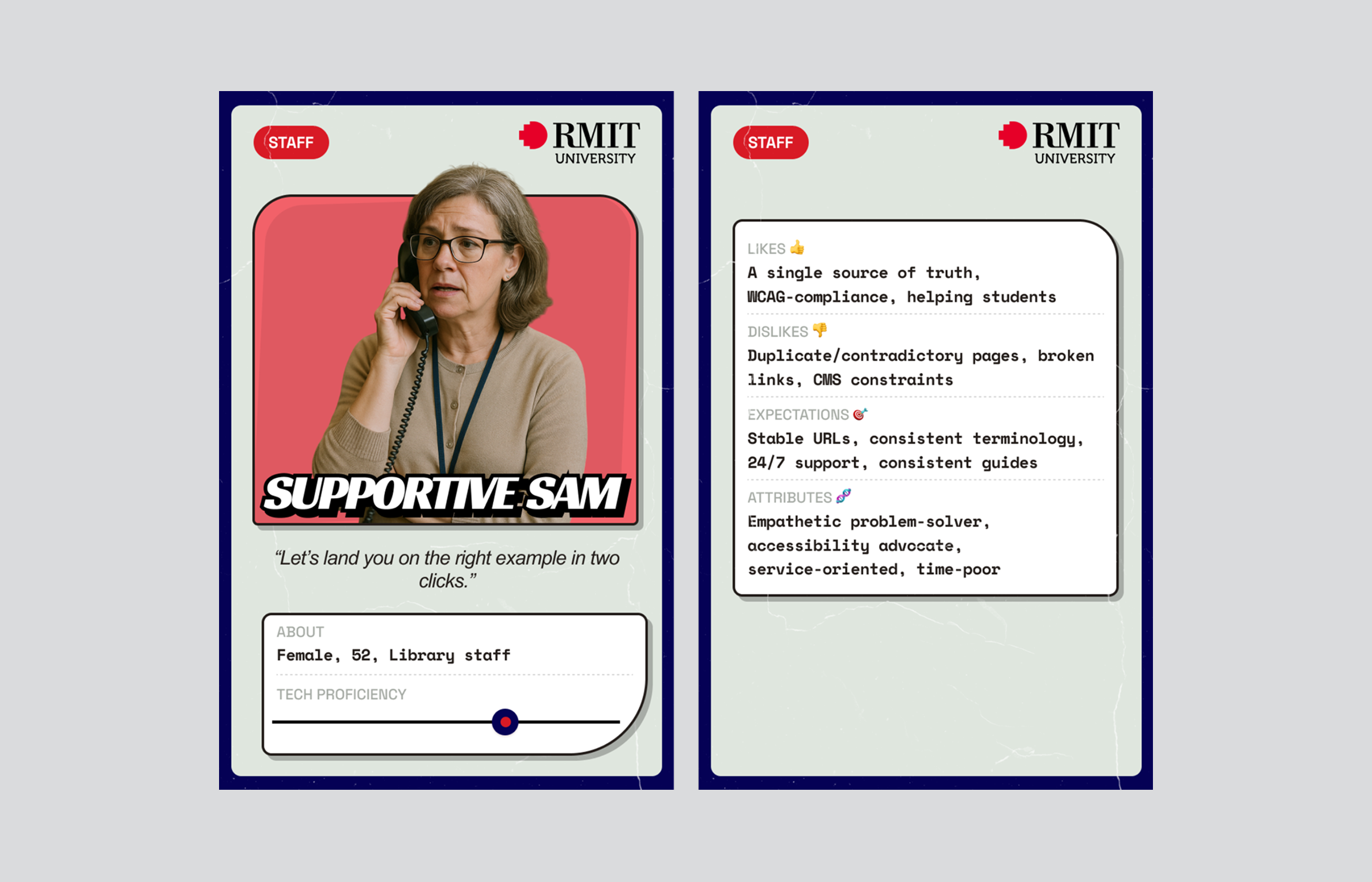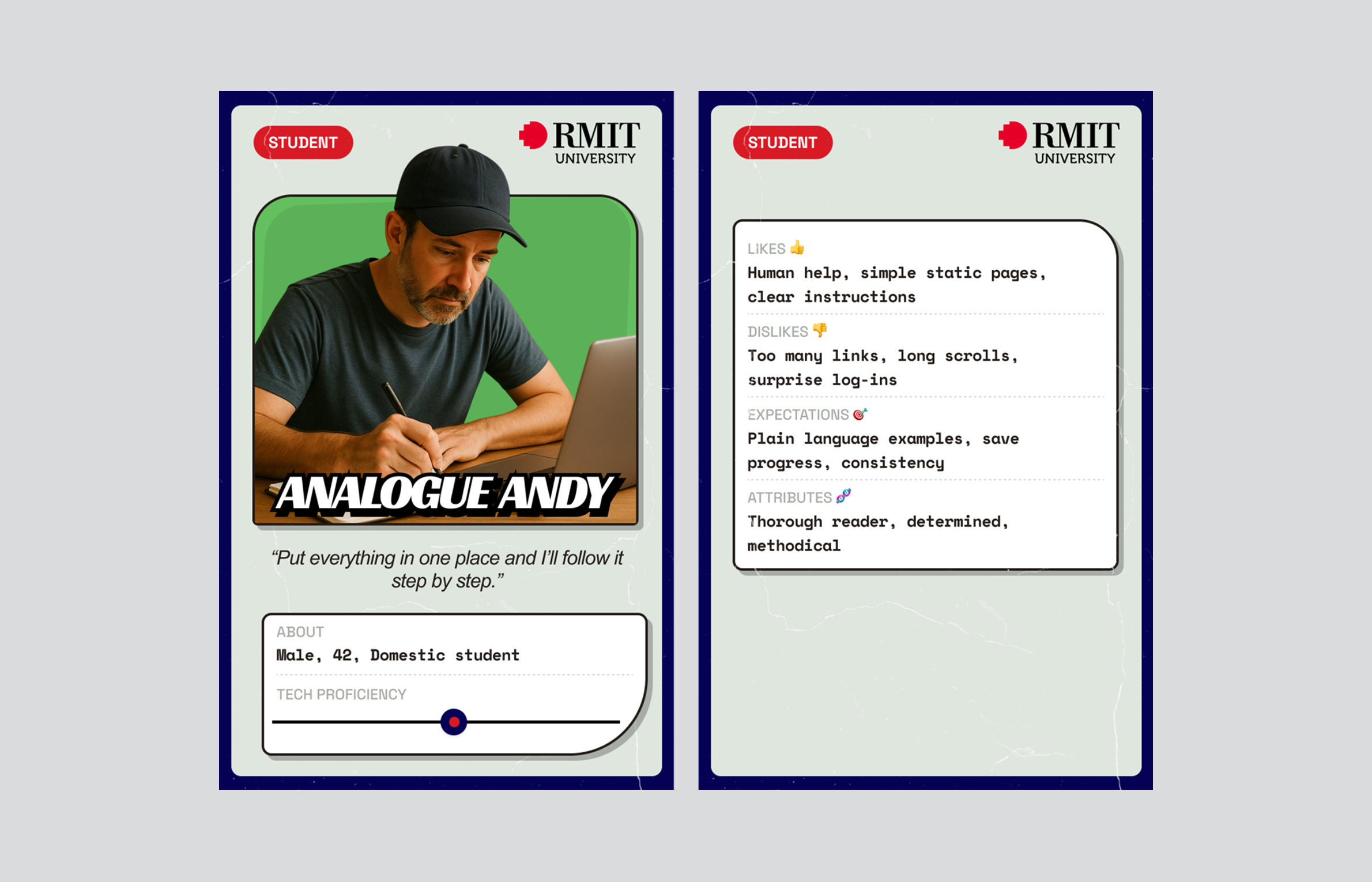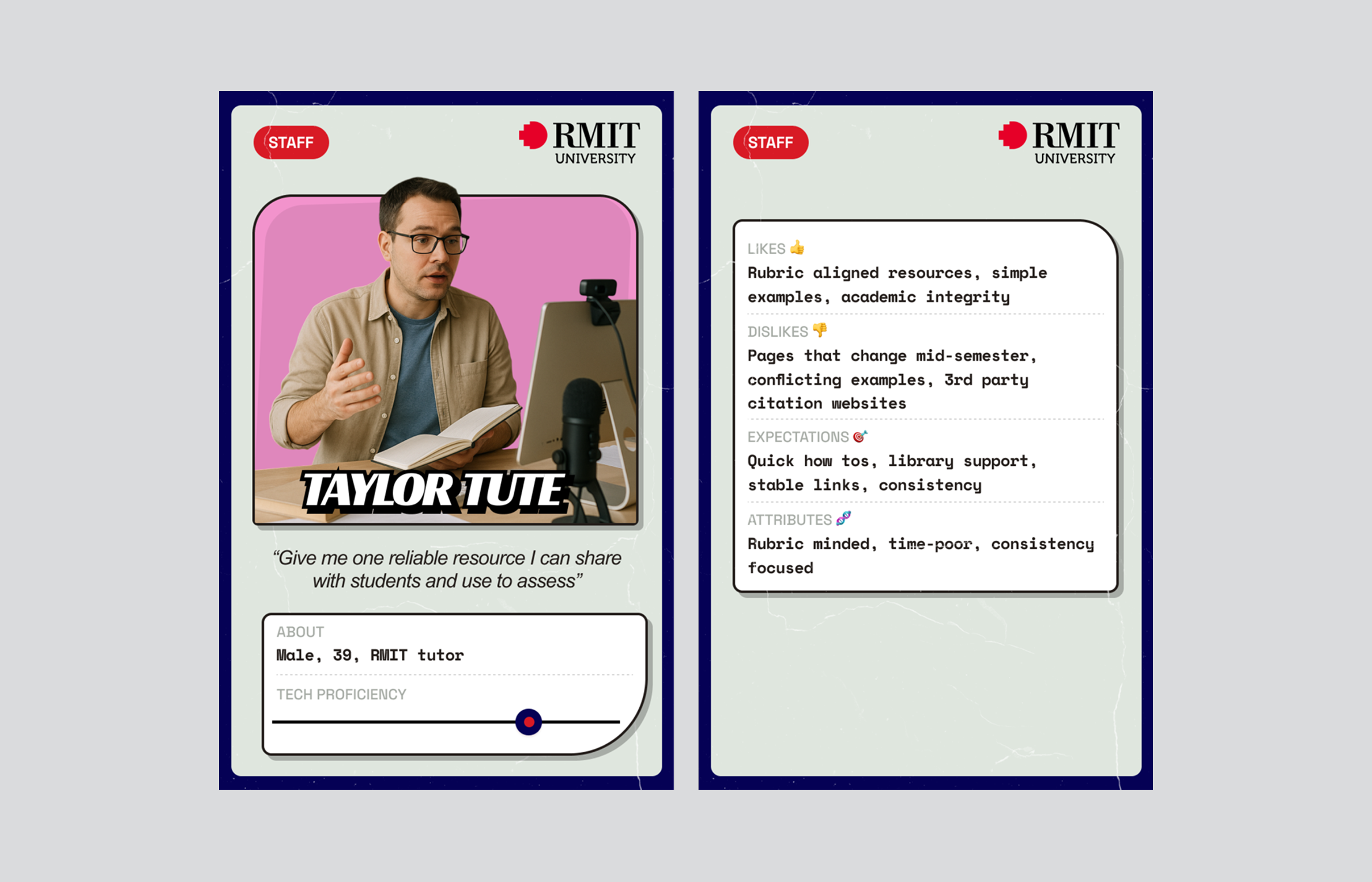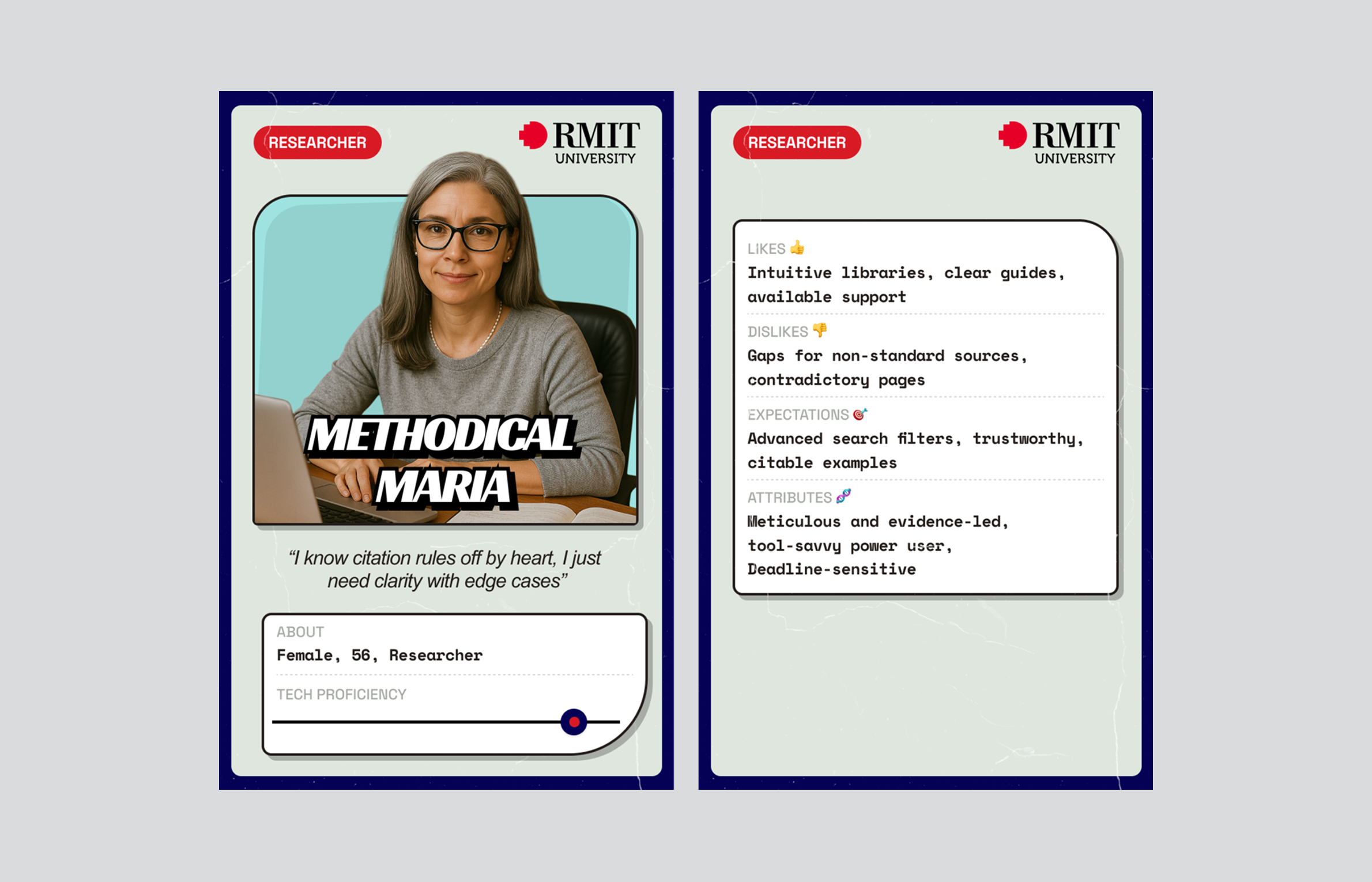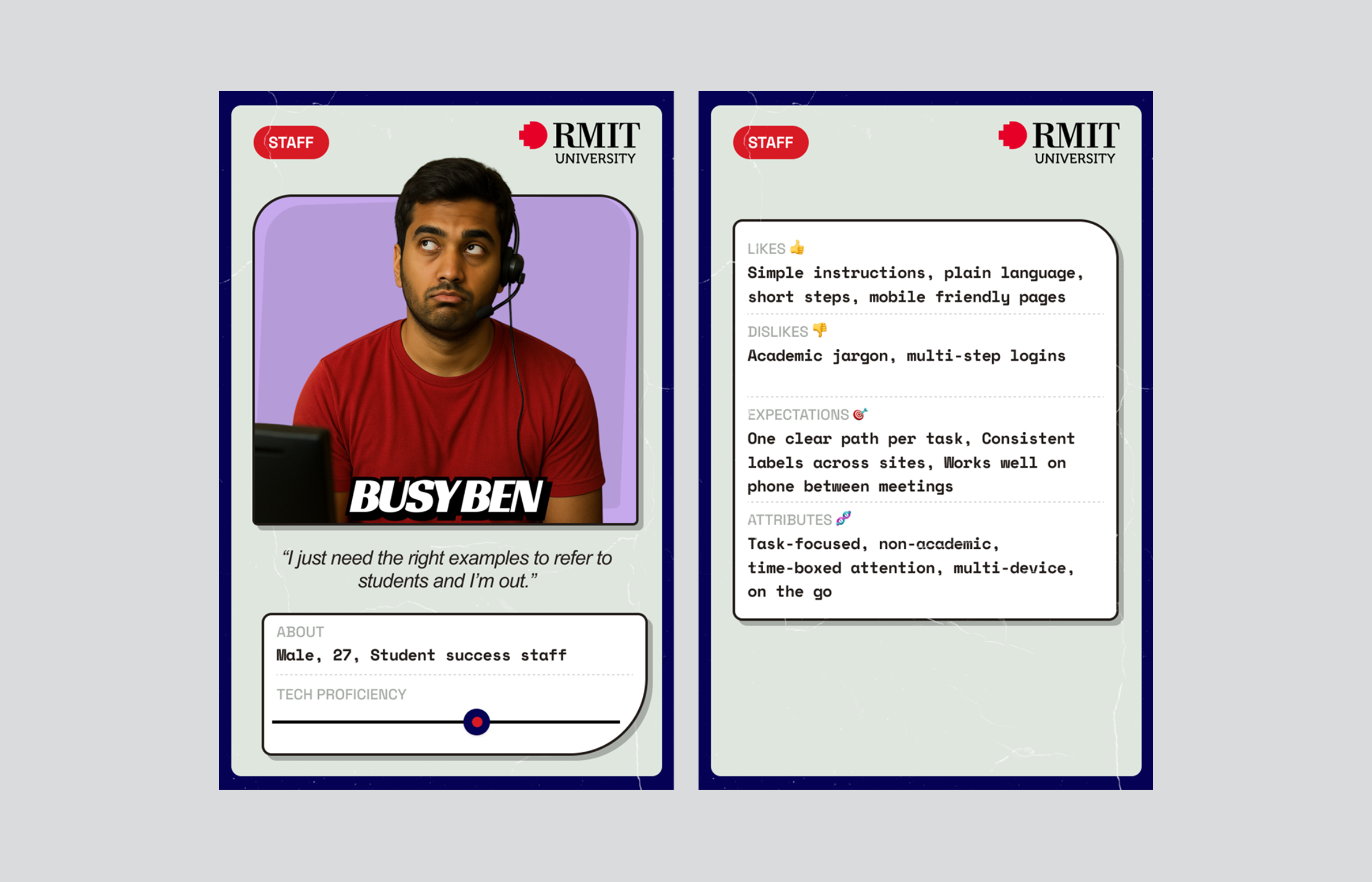RMIT Citeready
Streamlining the end to end referencing journey of a student across multiple university touchpoints through one intelligent and accessible hub.
When working on an assignment a student has to juggle multiple platforms which result in; multiple log-ins, inconsistent interfaces and poor cross-platform communication when finding references and creating citations. This results in spikes in cognitive load and increased stress precisely when students are time poor.
I began with autoethnographic walkthroughs and a parallel run with my partner to validate assumptions. I captured notes, sketched an initial journey map, and built proto-personas. These then drove storyboards and, ultimately, a high-fidelity experience map.
Then once I had my experience map I focused on concept generation for solving the problem. This involved using brainstorming, how might we questions, worst possible solutions and crazy 8s. I had the most success with crazy 8s for concept generation which is where the idea for citeready came from.
From here a lot of thought was given to desirability, feasibility, viability and the ethics of my concepts. My idea for an intelligent built-in bibliography within canvas, which is RMIT’s student hub, came out on top and I started to develop early prototypes. After fleshing out this concept with more crazy 8s I started to build Citeready within figma make.
ReadyCite is a focused, high‑fidelity prototype that gives RMIT students a single doorway into referencing. It streamlines a three‑step flow; capture a source (bookmark or paste), fix with guided prompts/examples, and export a clean reference list. Key touches include a mini Library Search launcher, a calming “Study Mode” for readability, English as a second language friendly copy, and a course/assignment‑aware style selector with manual override. Built to WCAG 2.2 and aligned to RMIT brand, it reduces tab‑hopping, clarifies next steps, and standardises the end‑to‑end referencing journey.
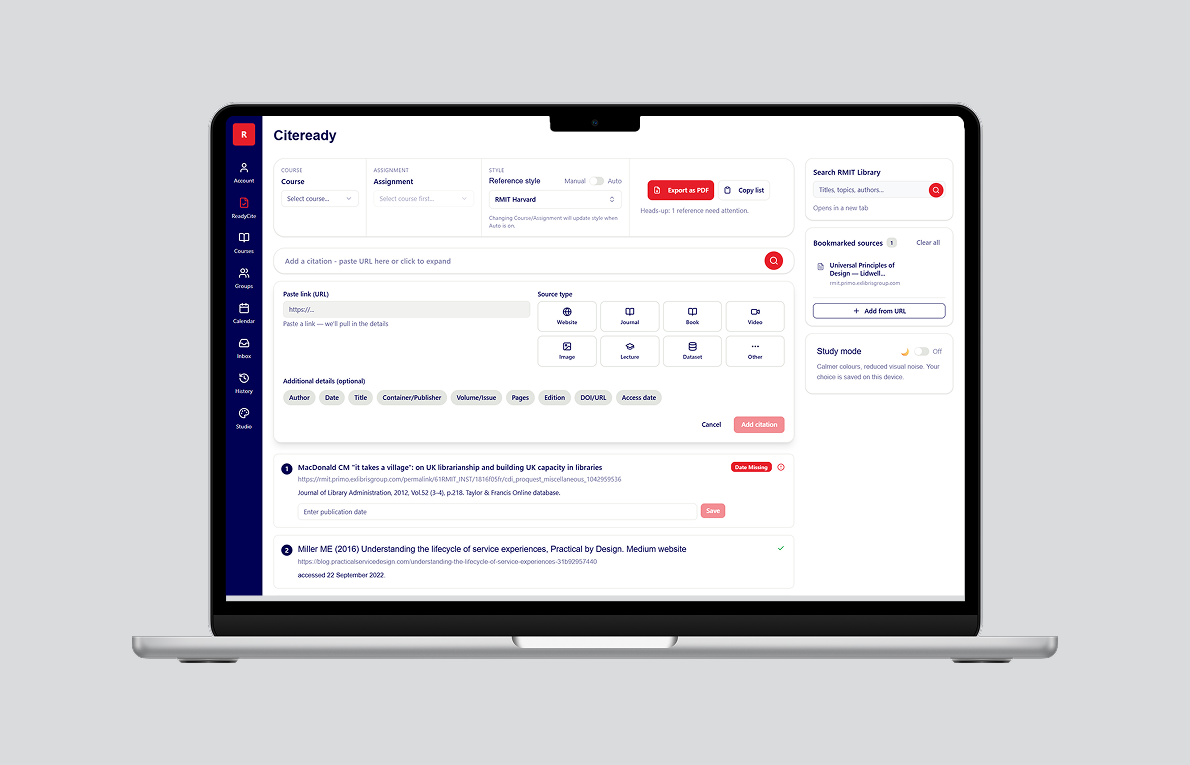
.png)
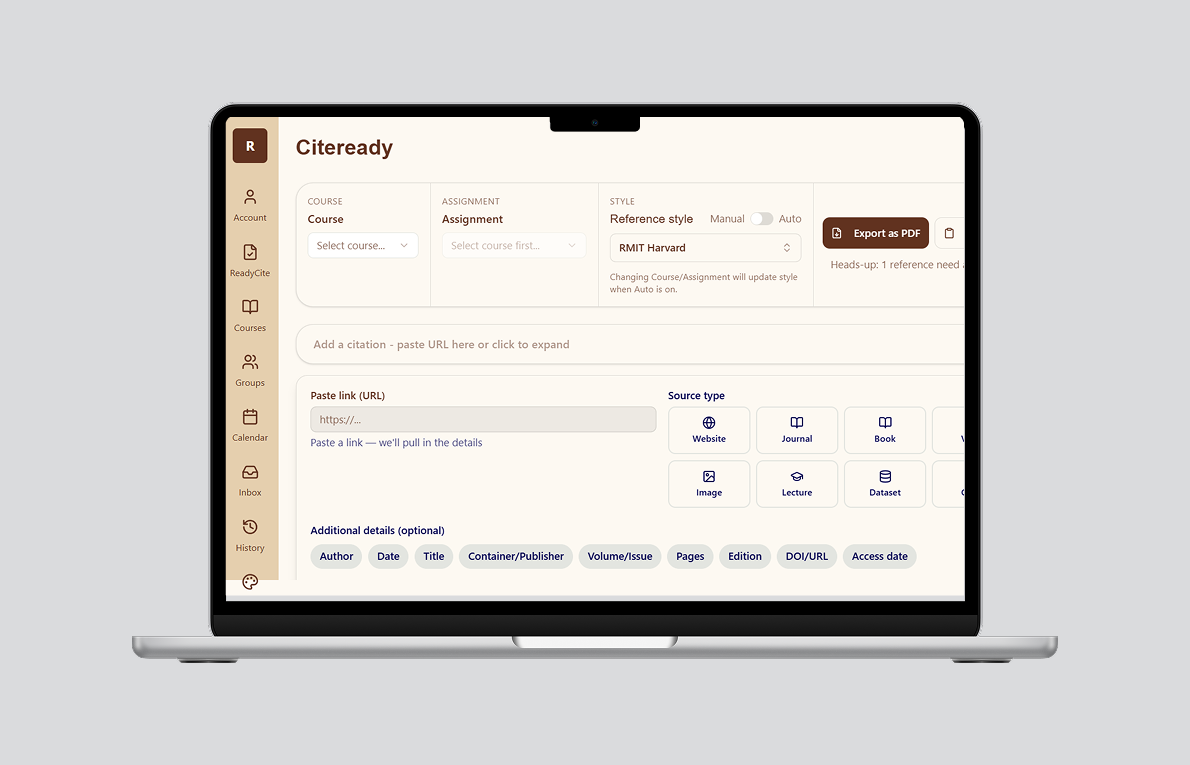
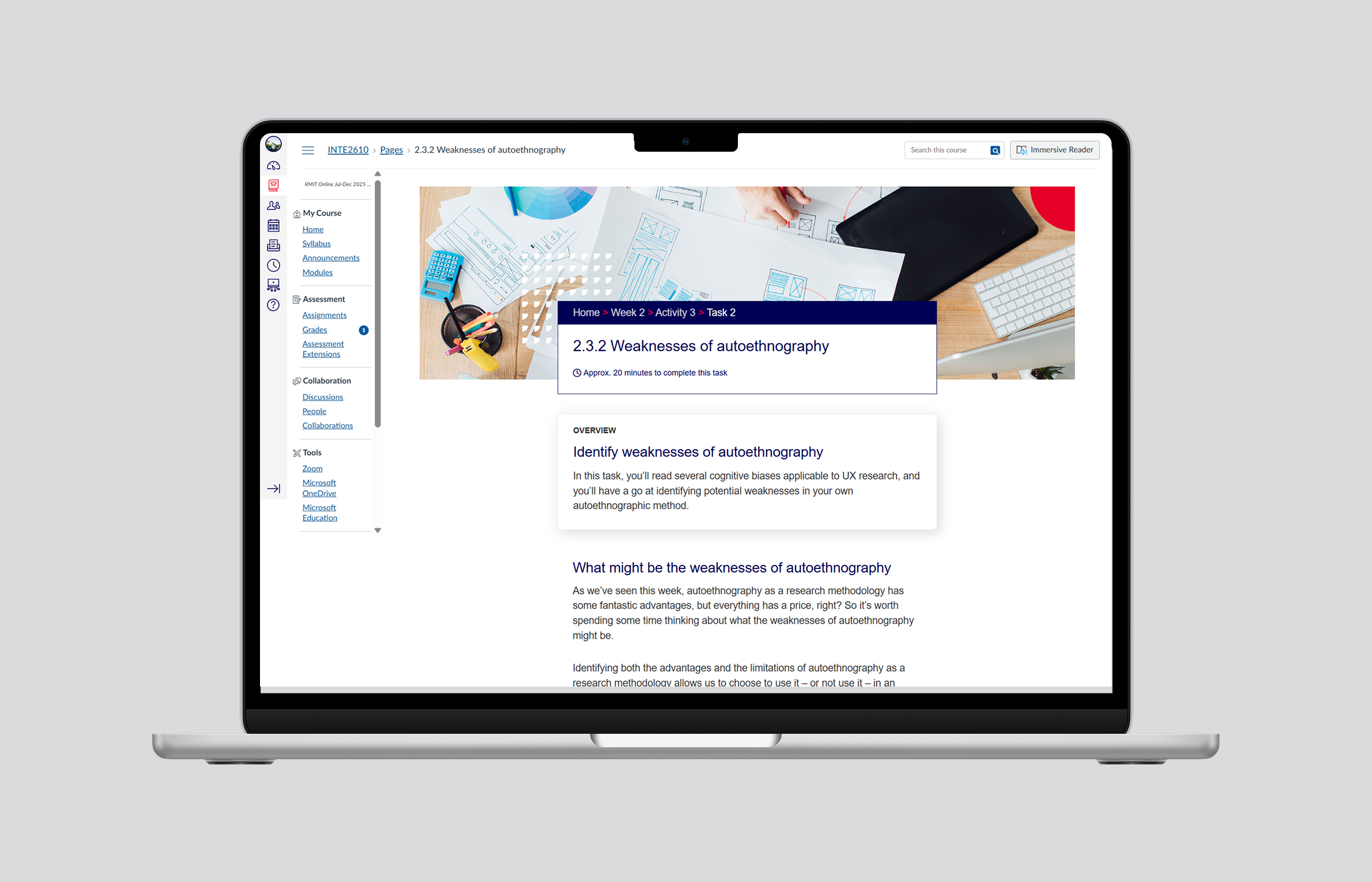
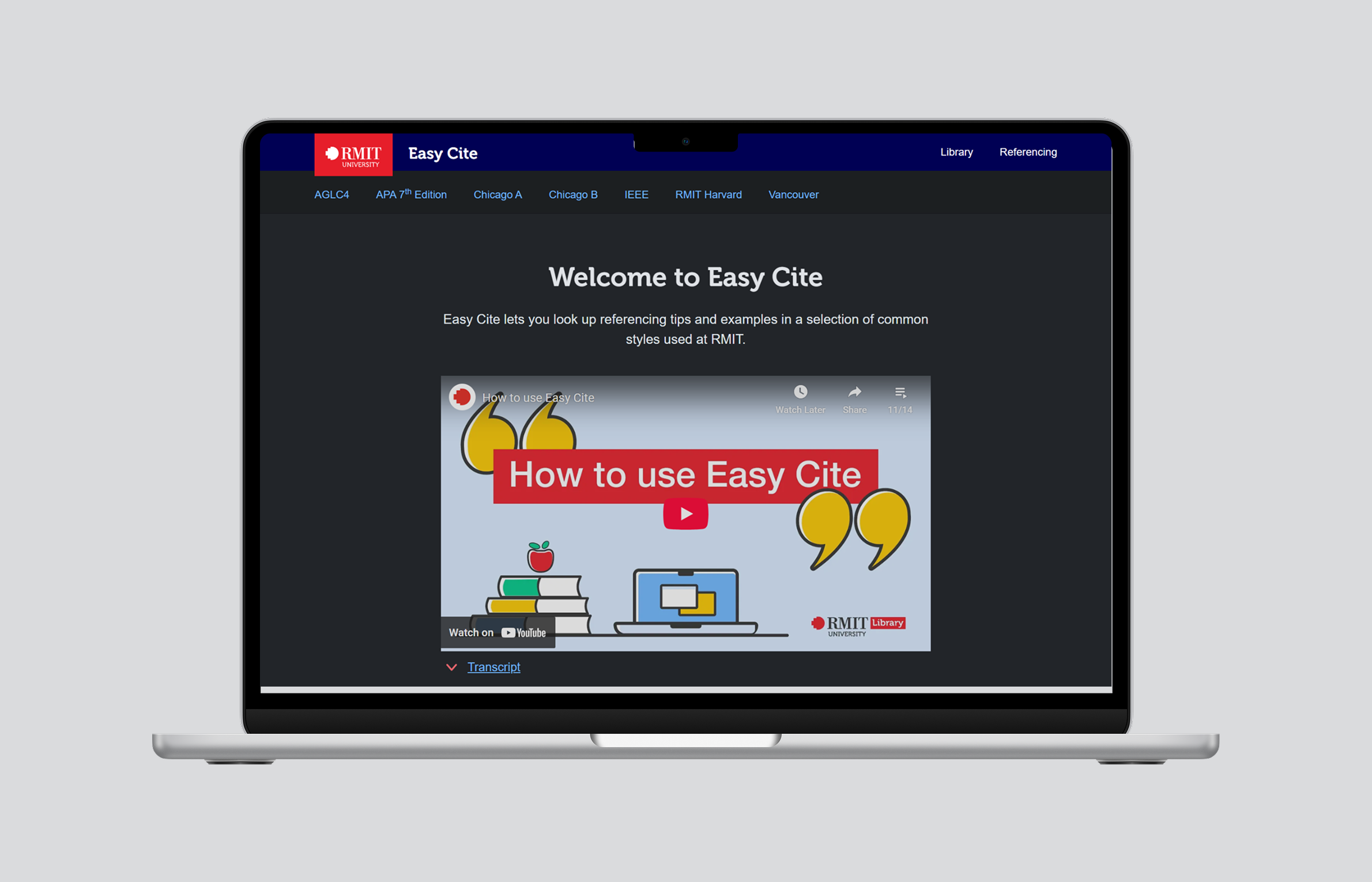
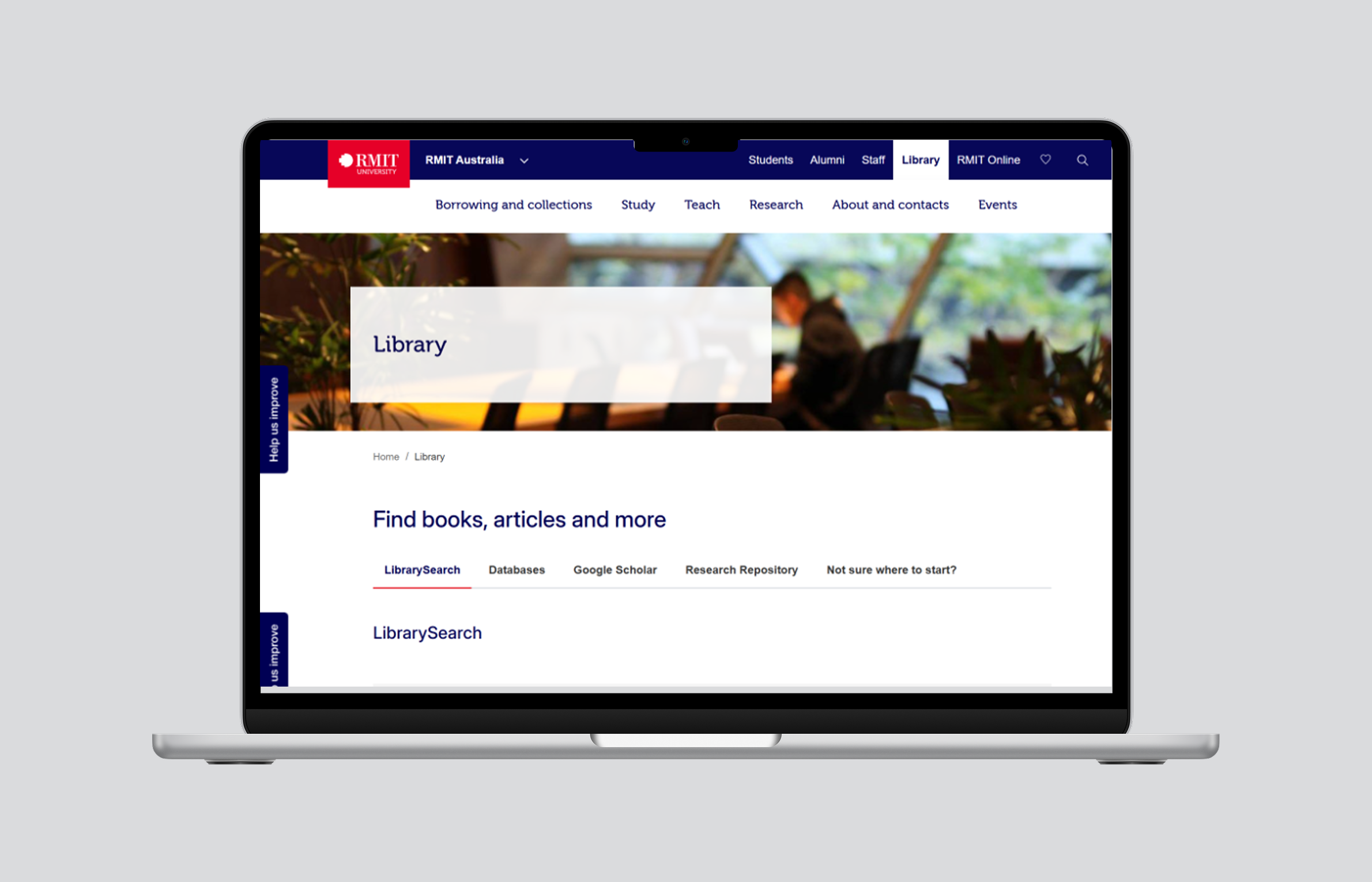
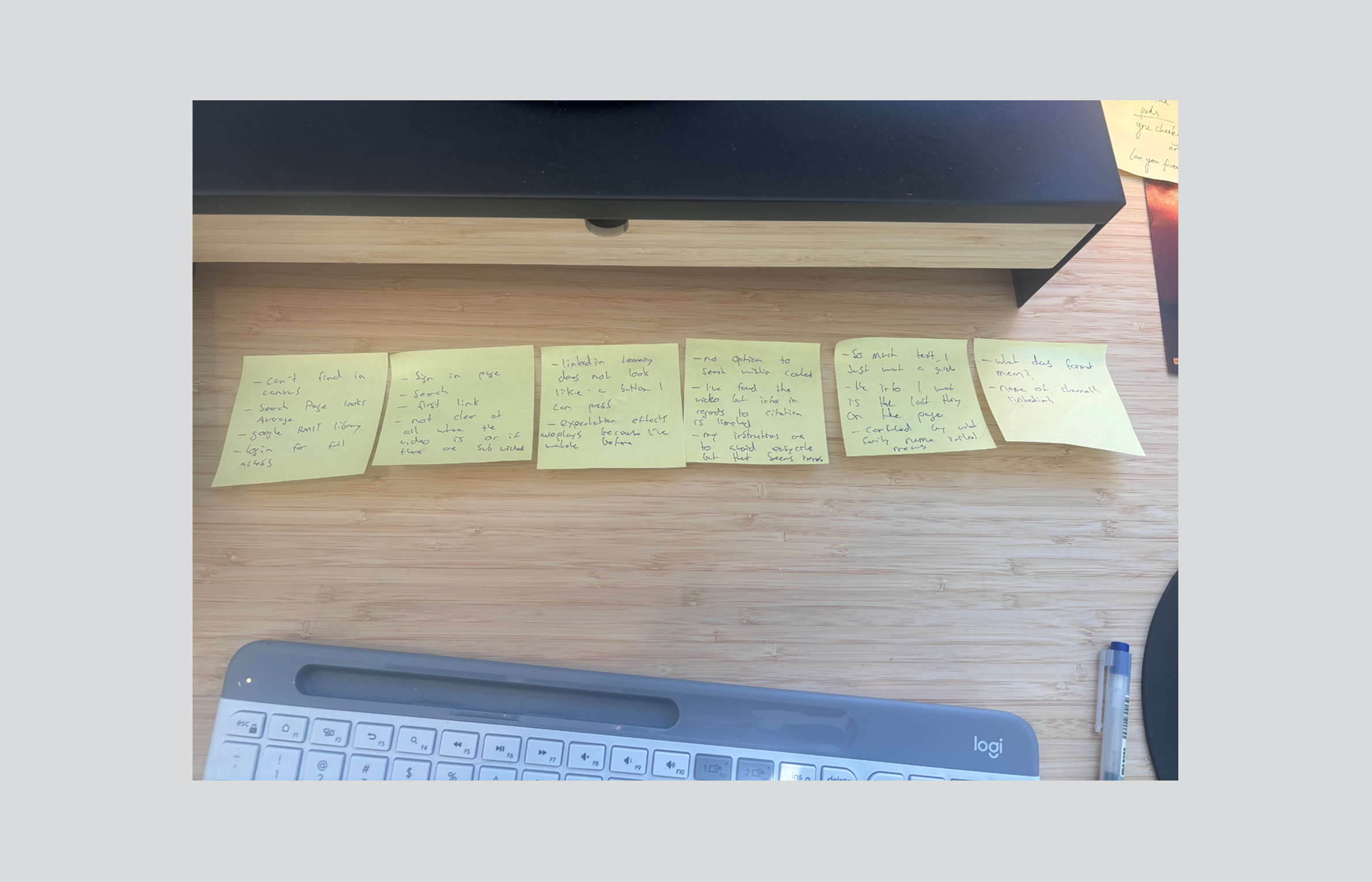
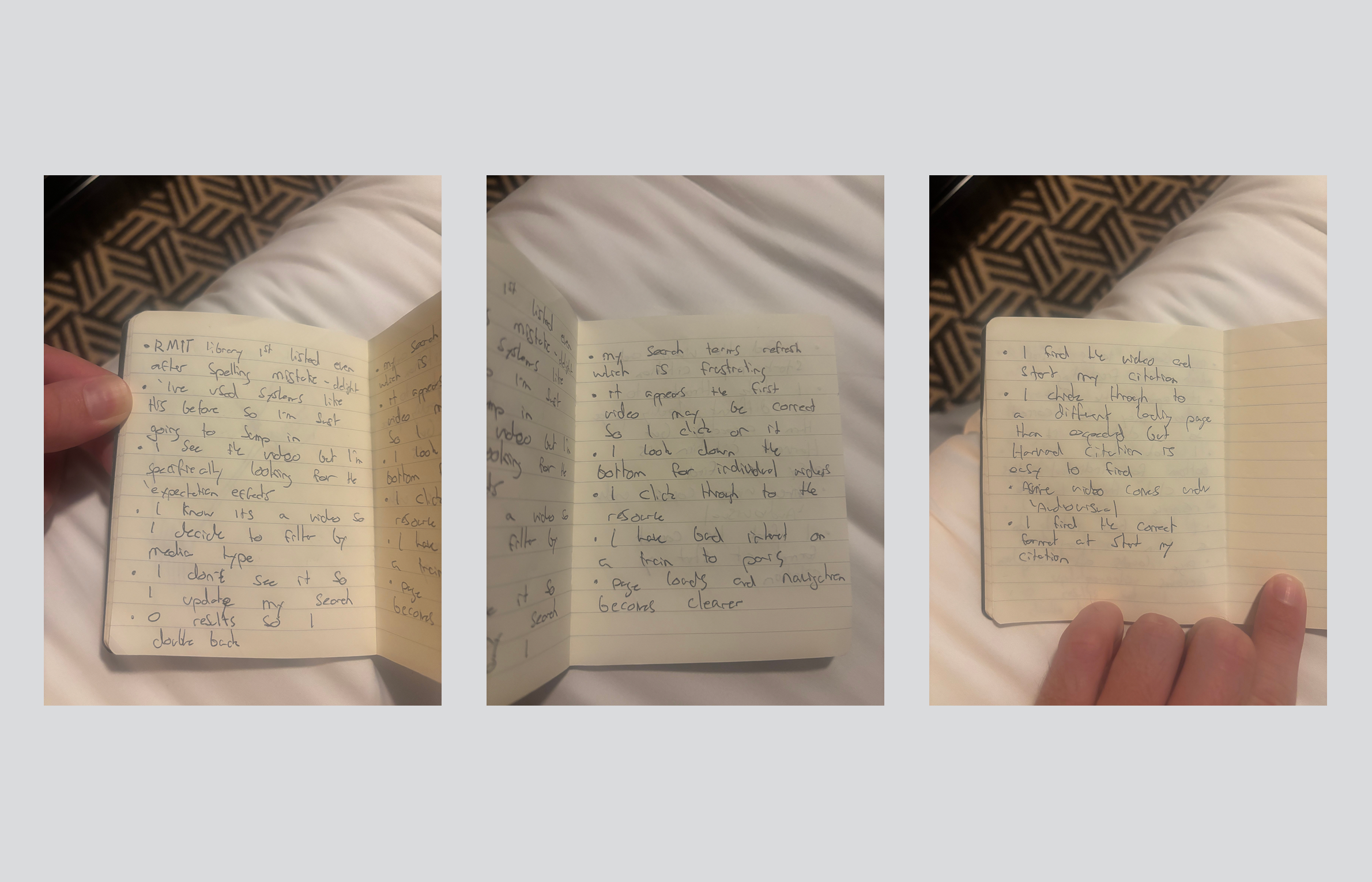
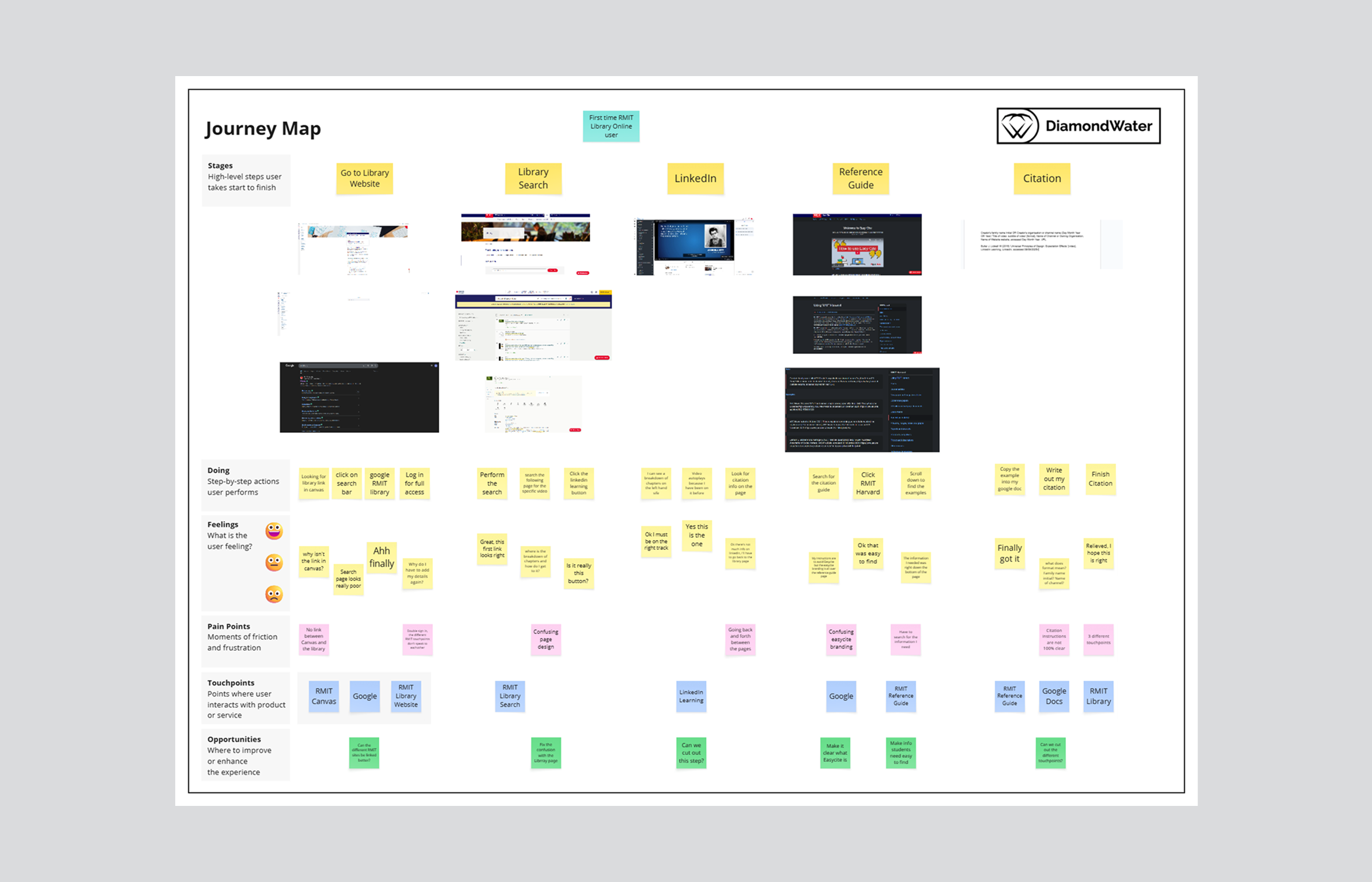
.png)
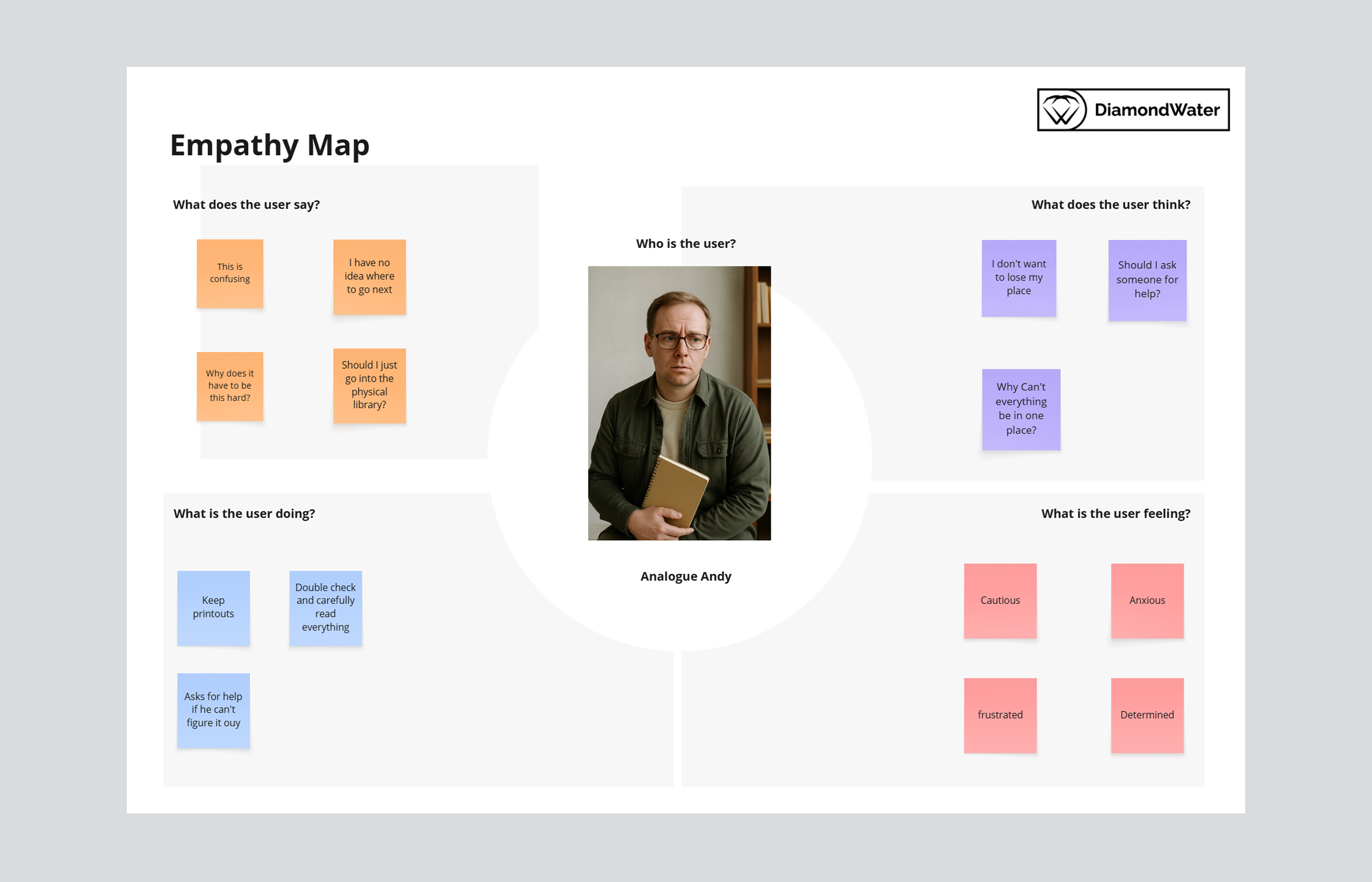
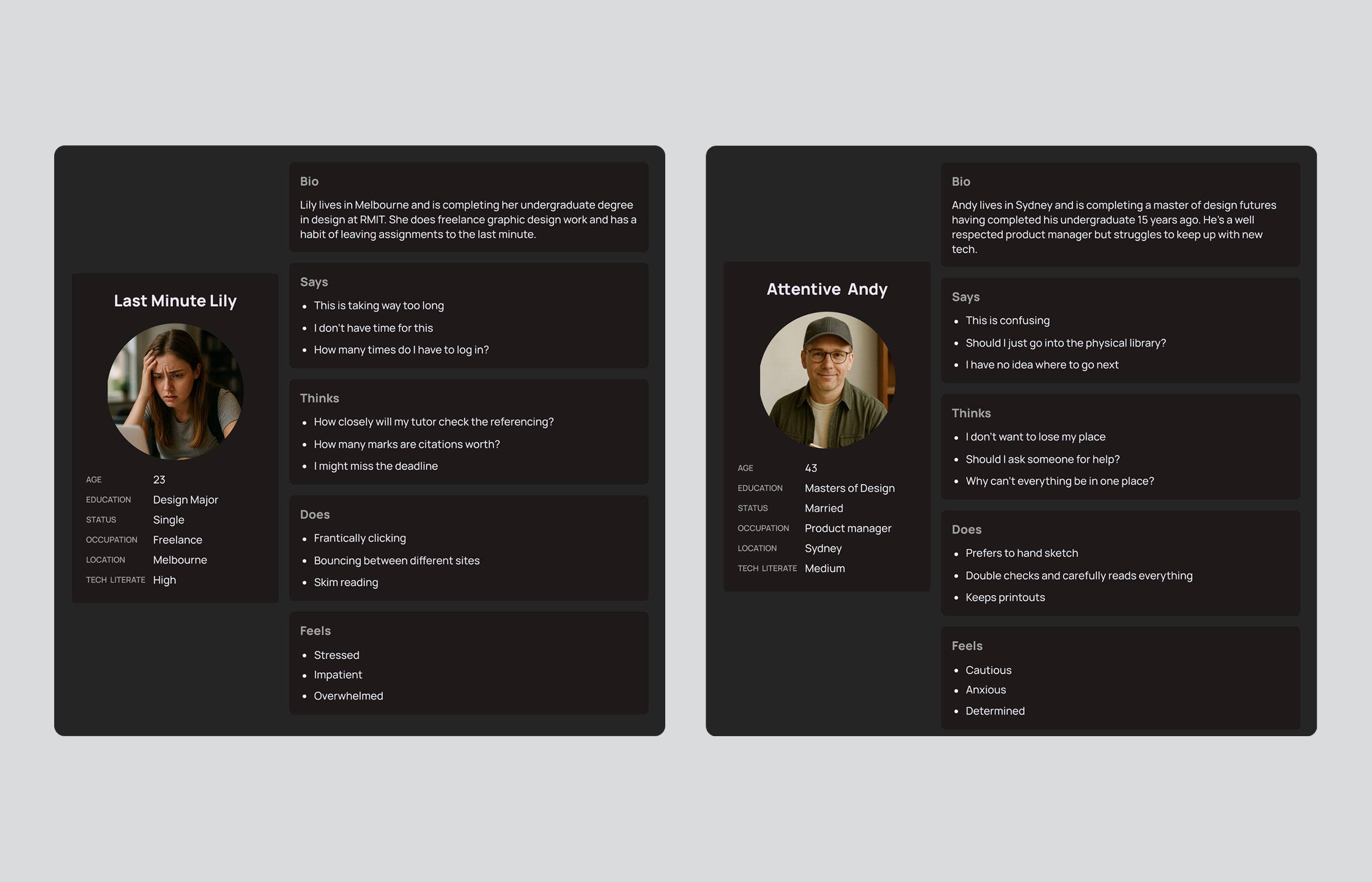
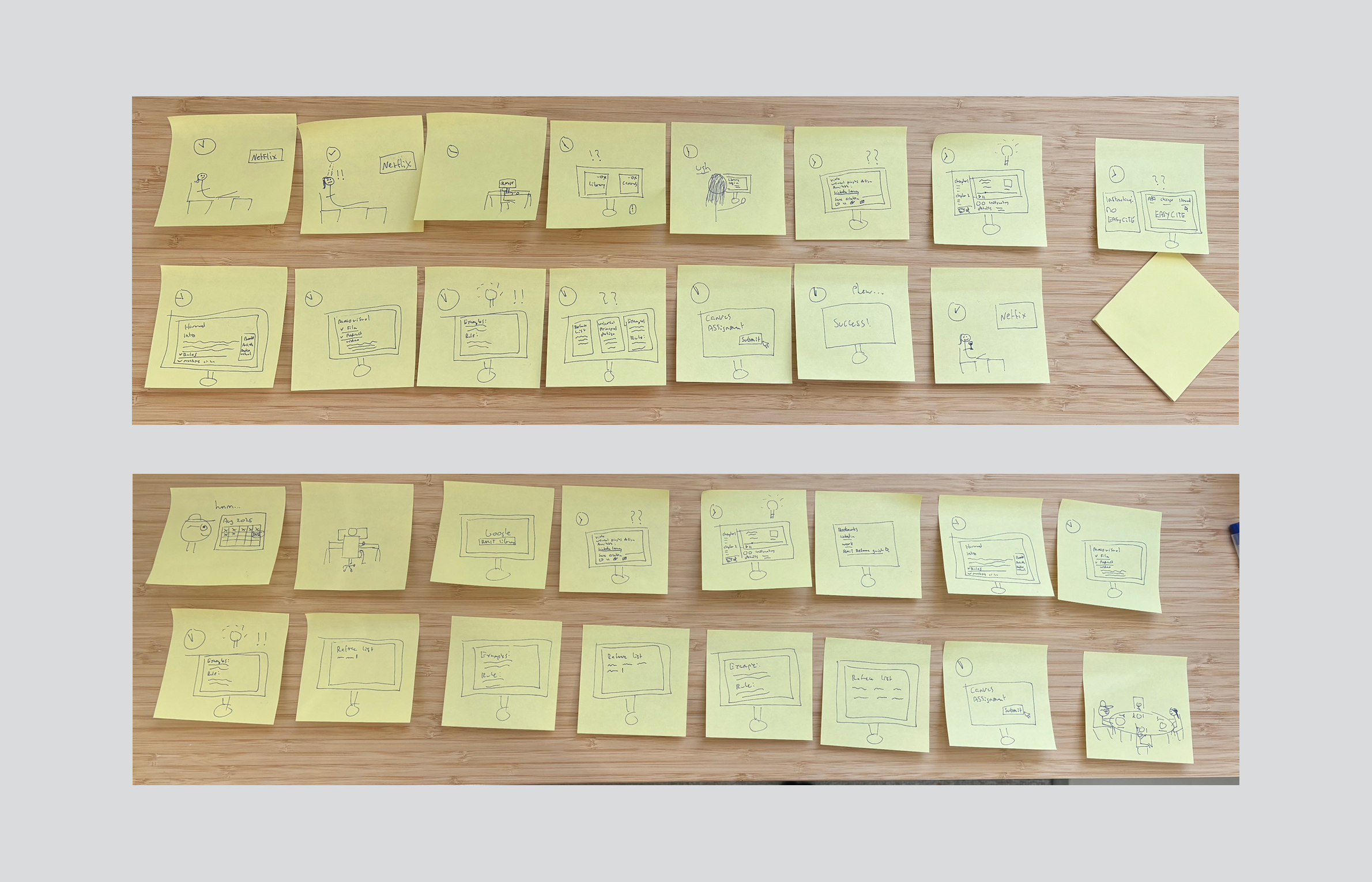
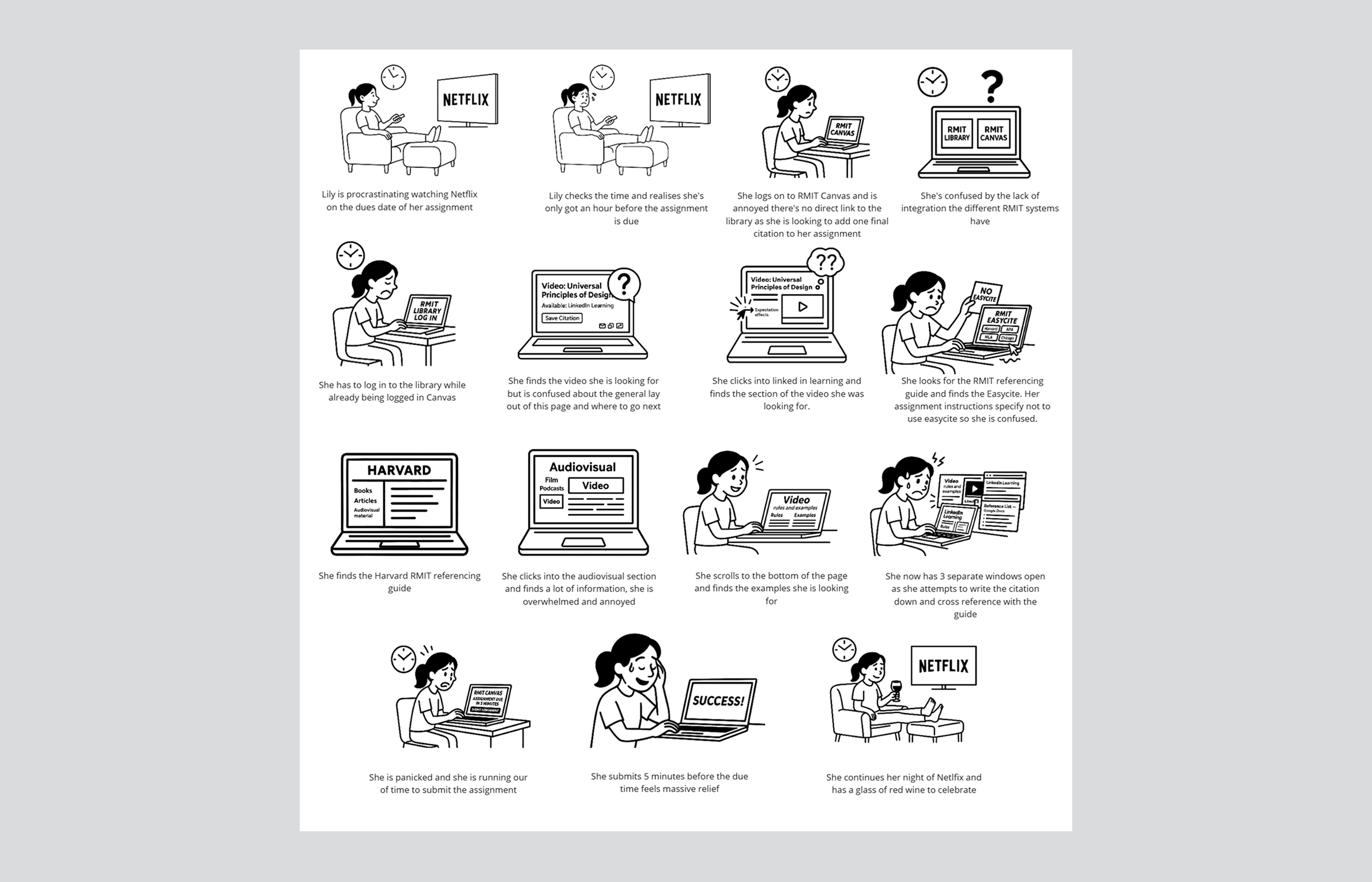
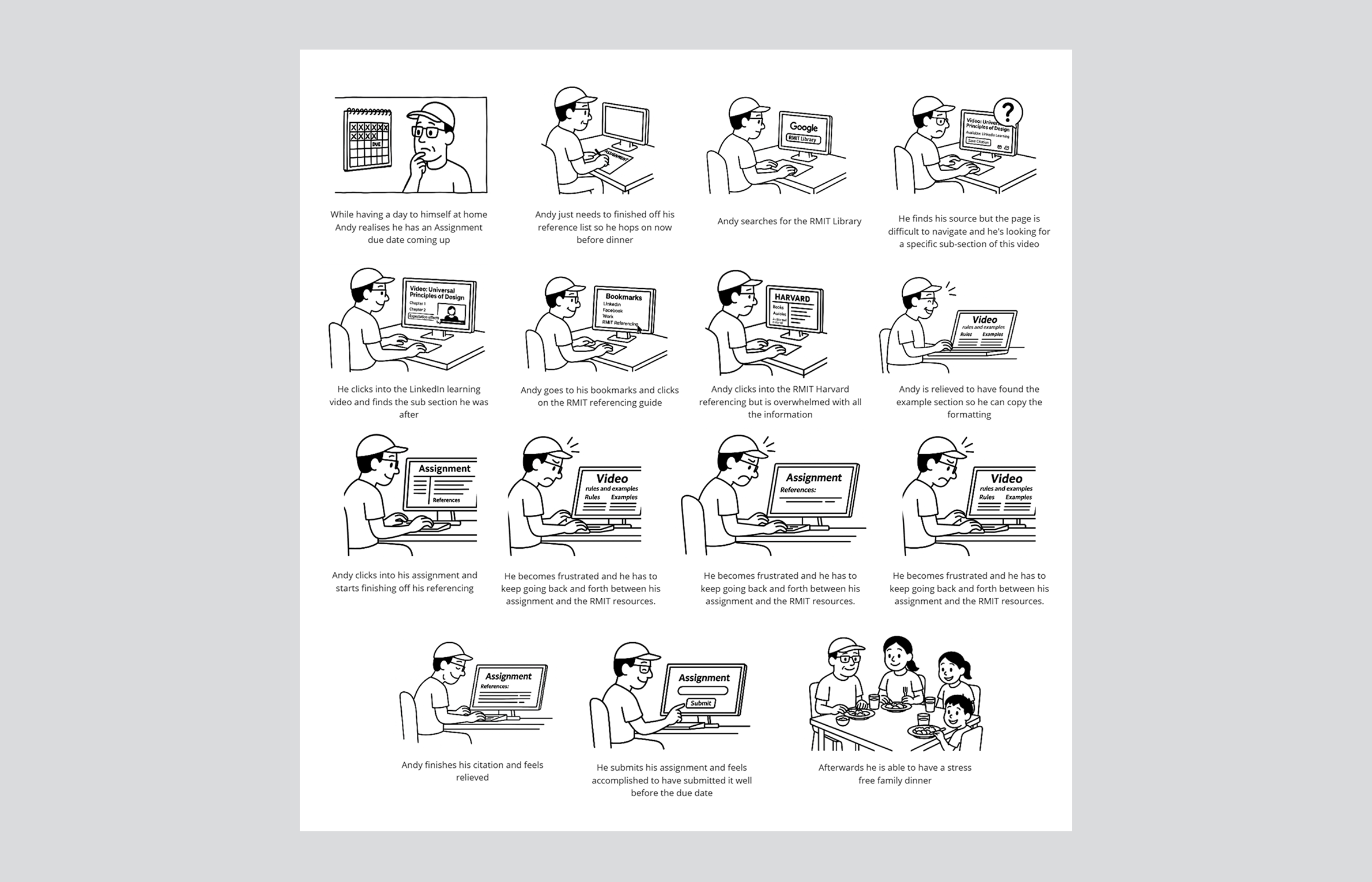
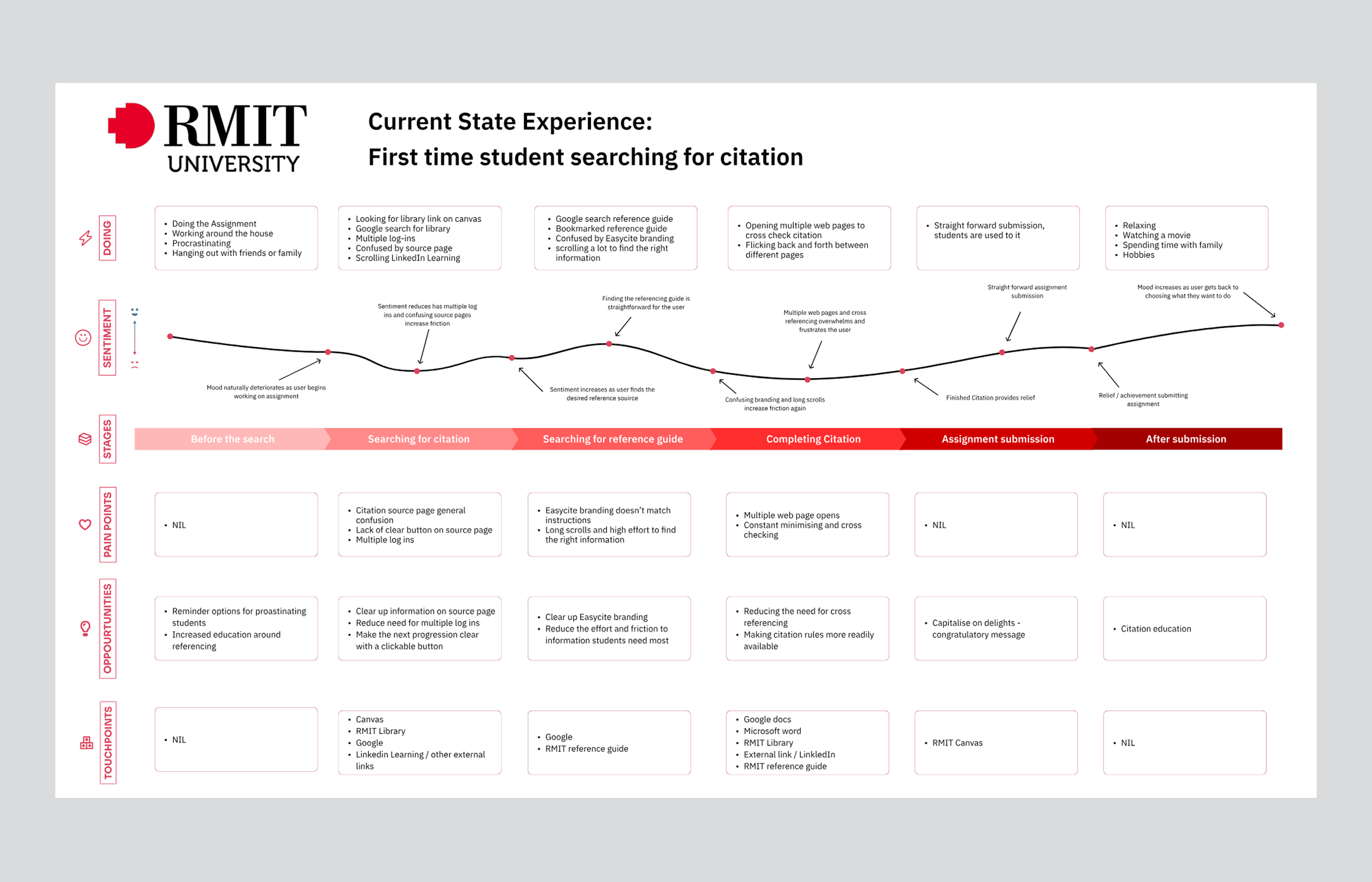
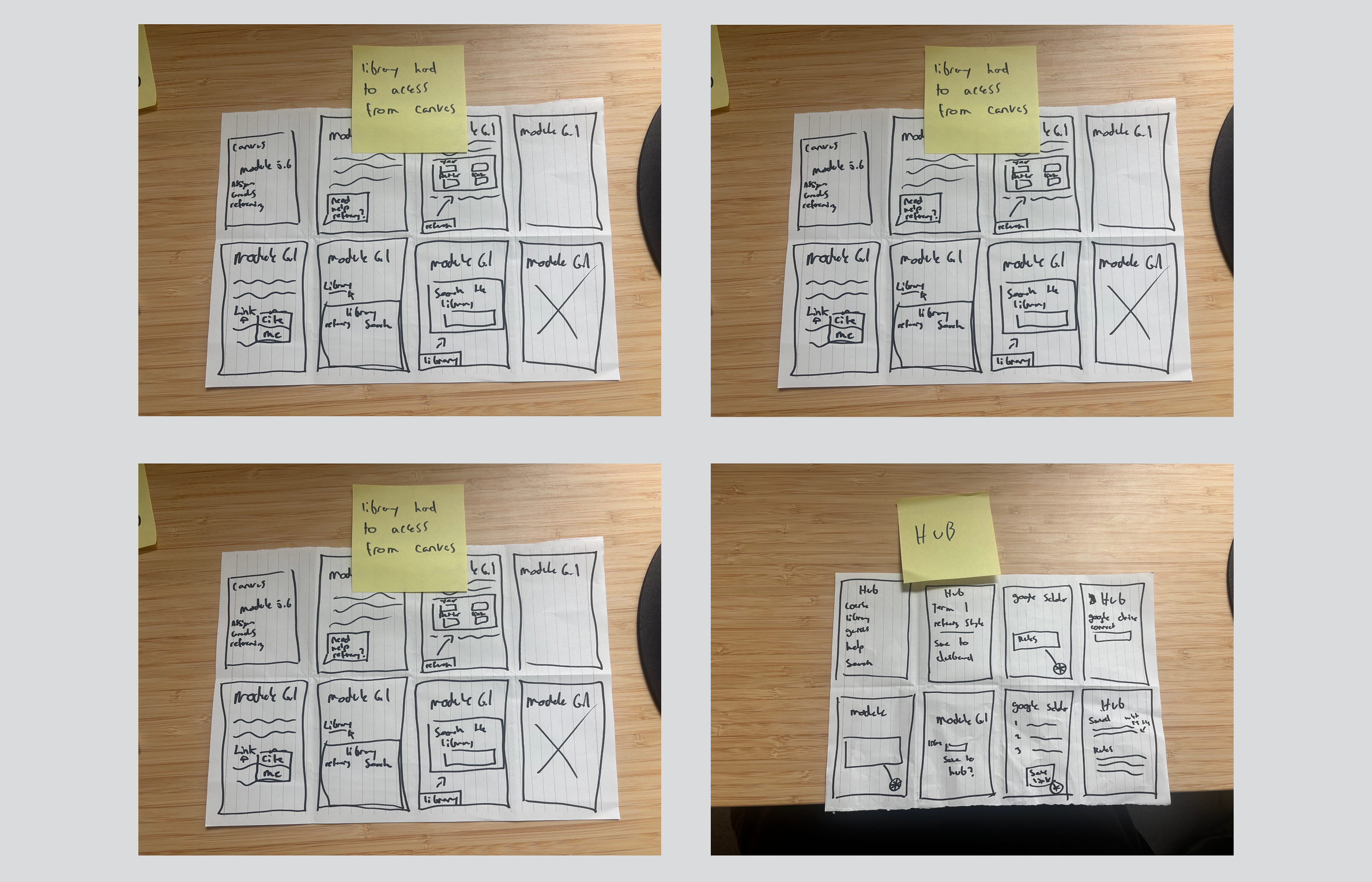
.png)
